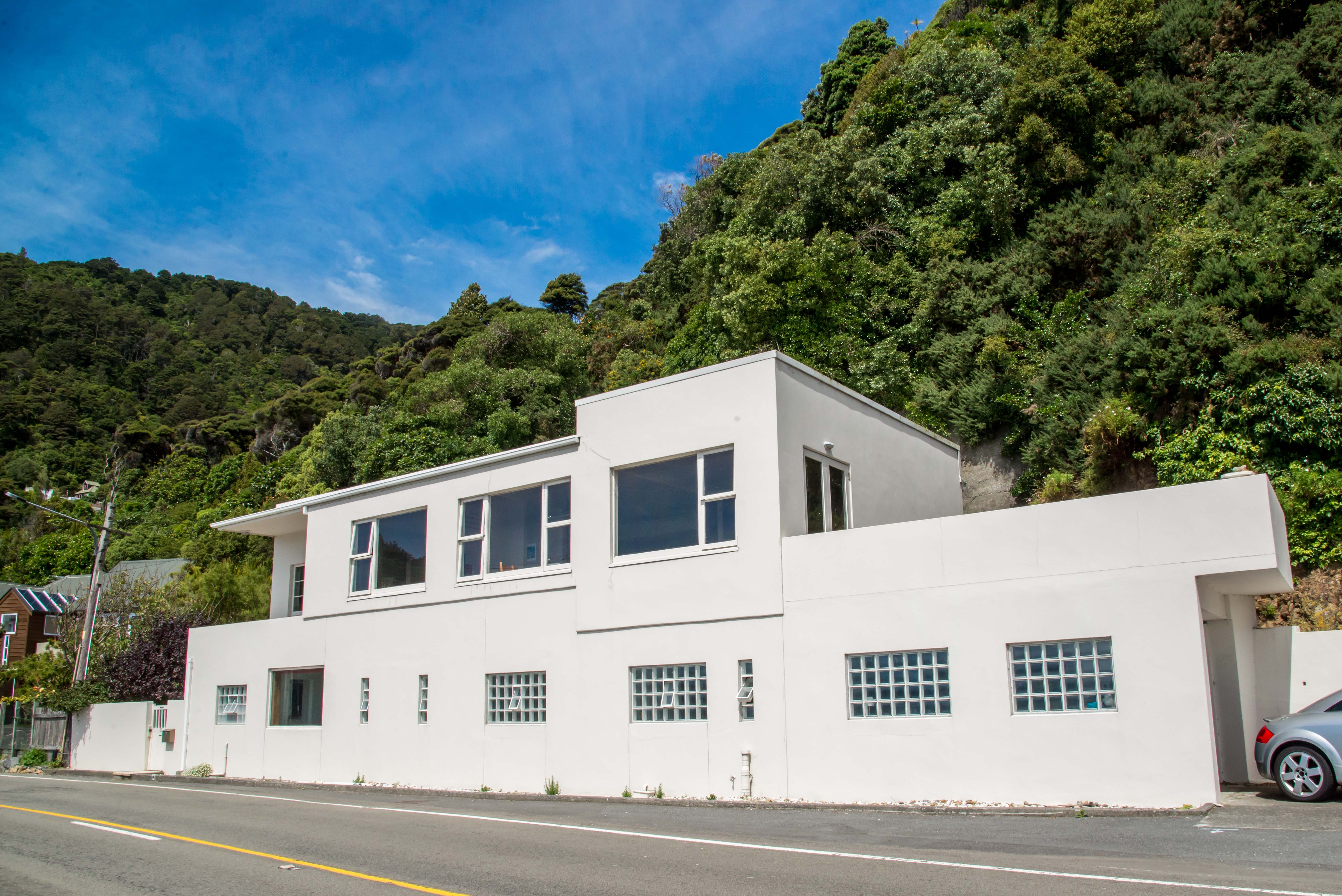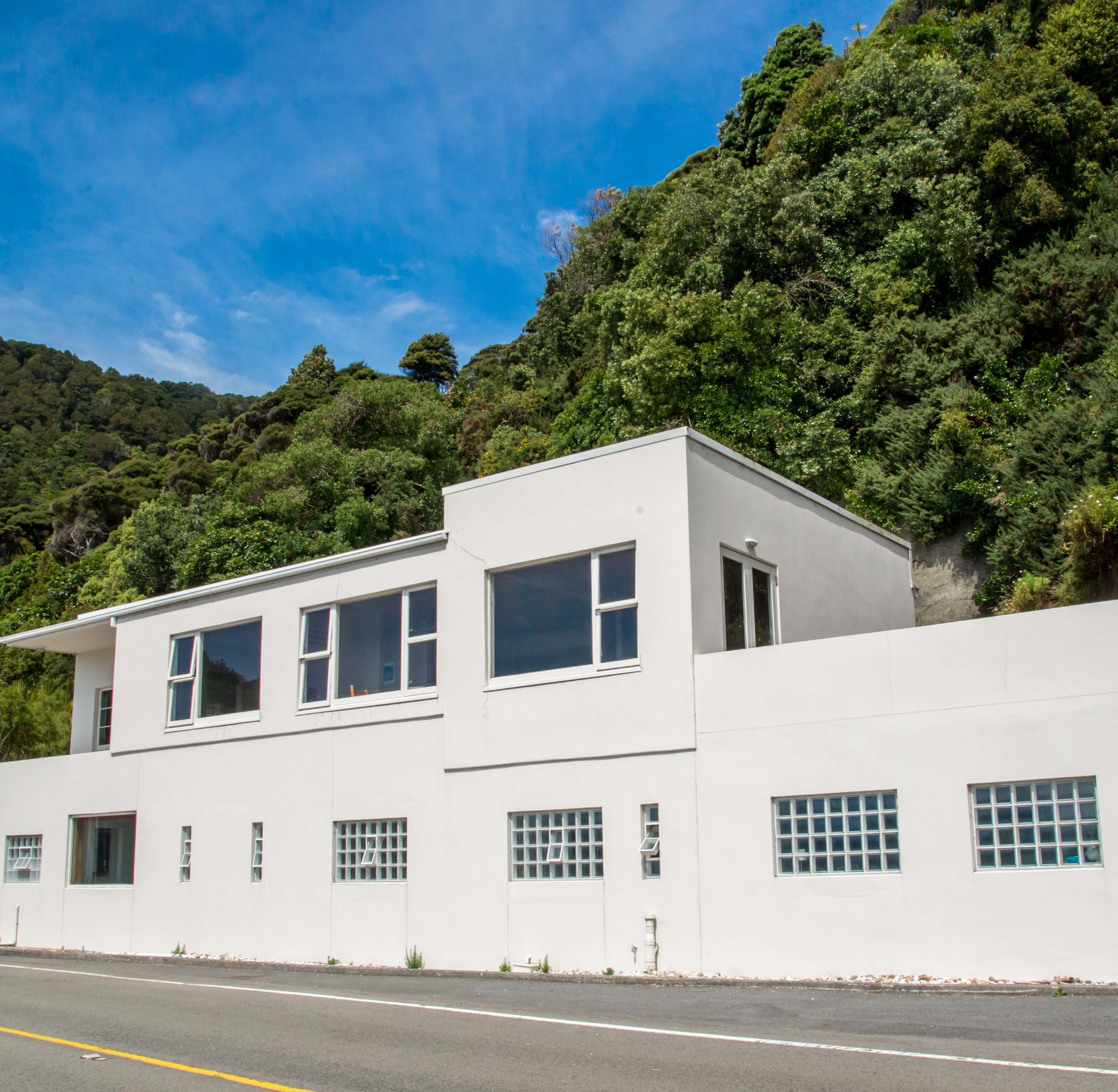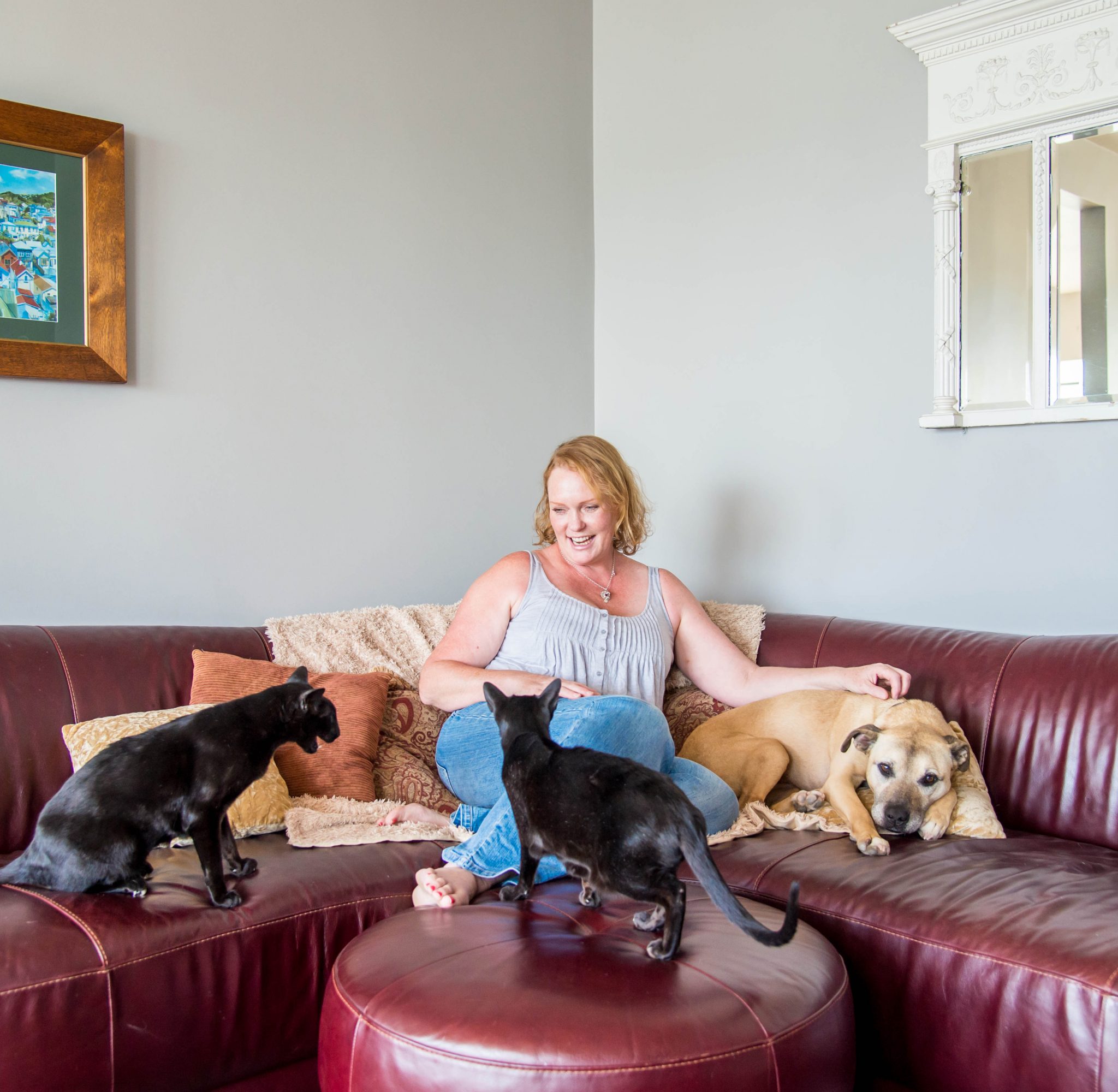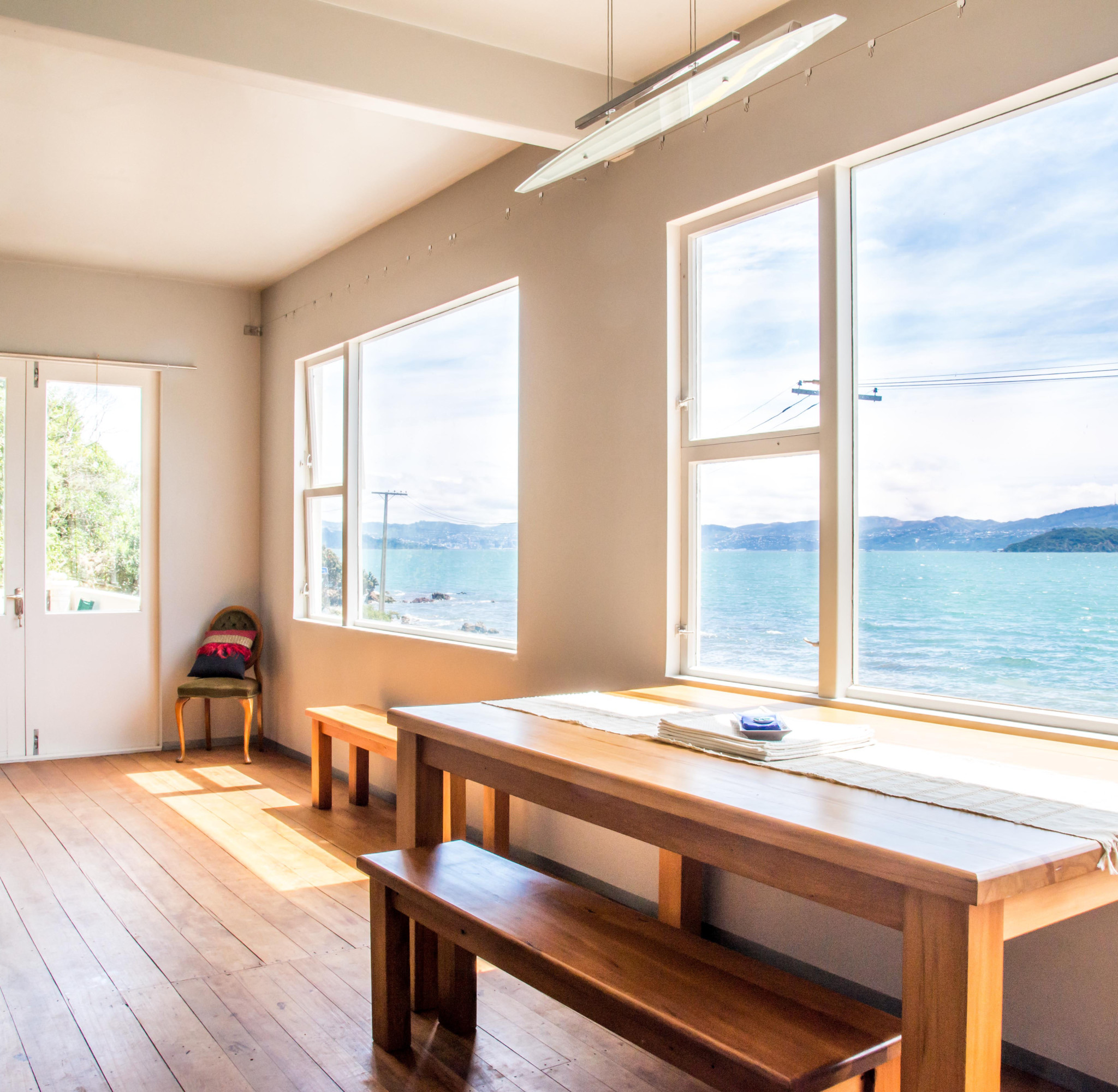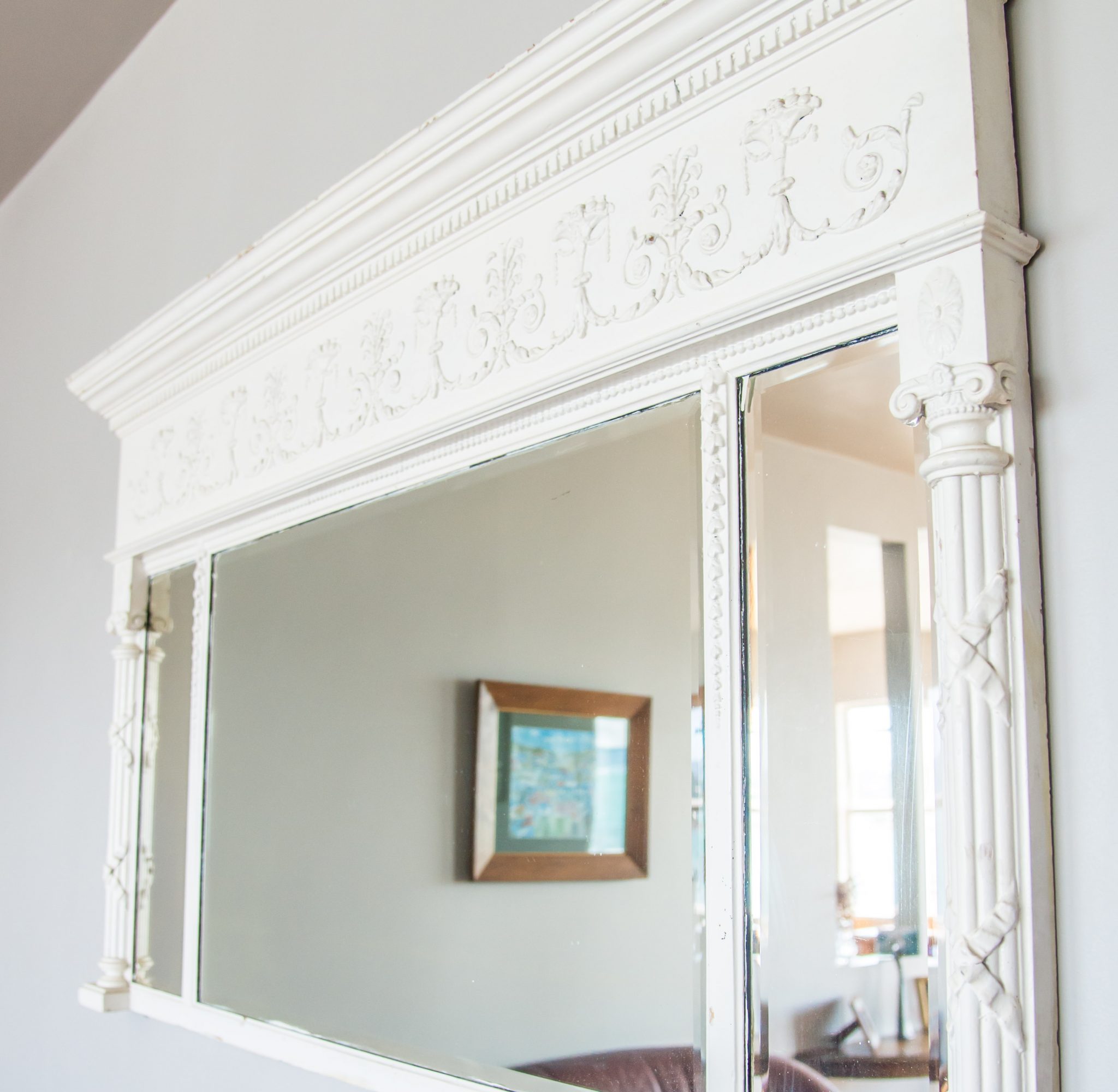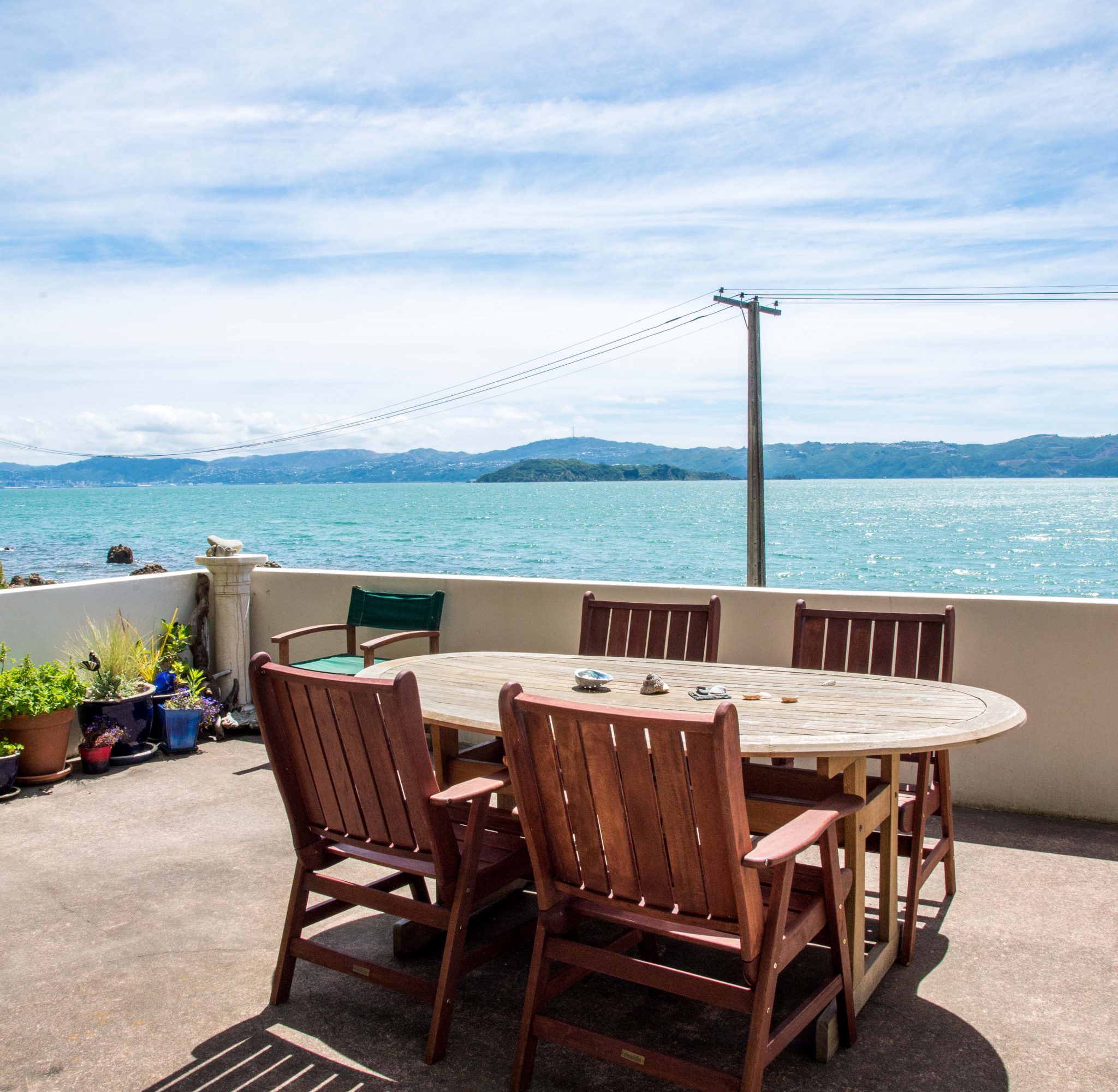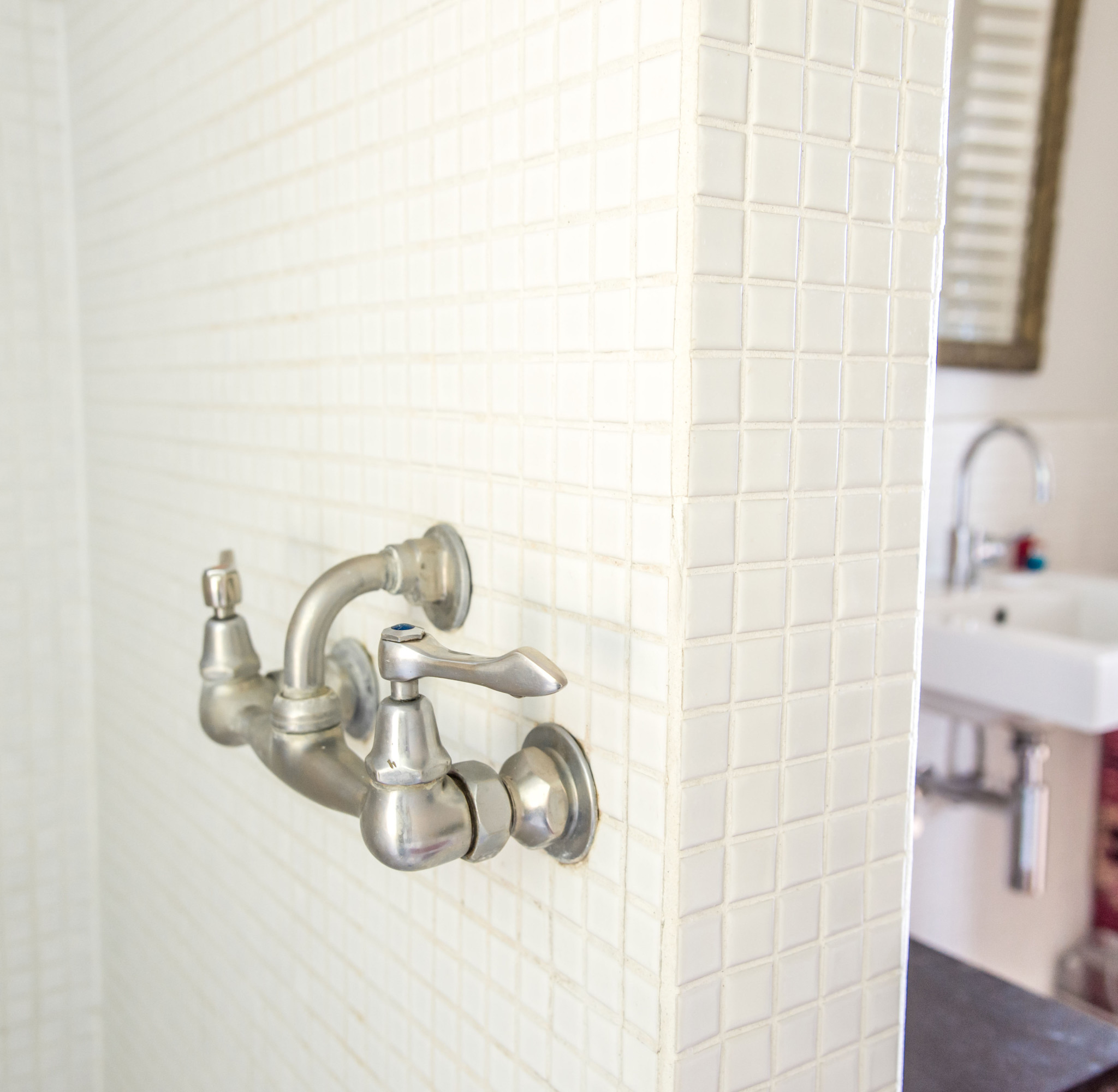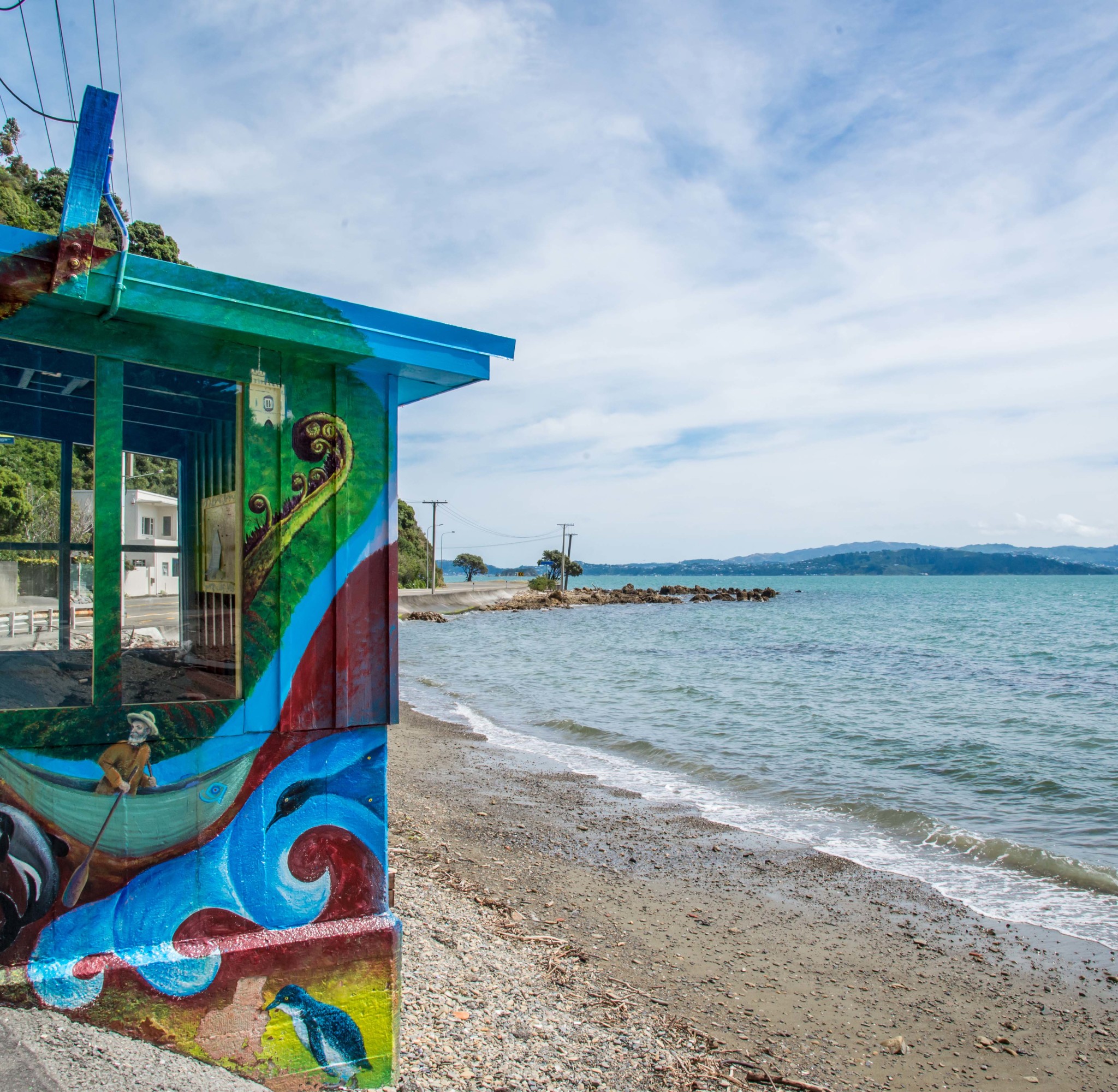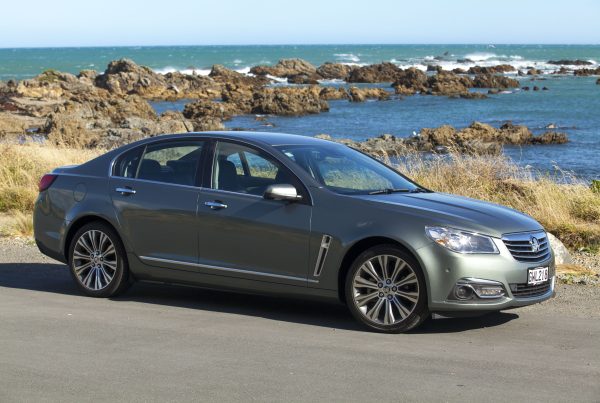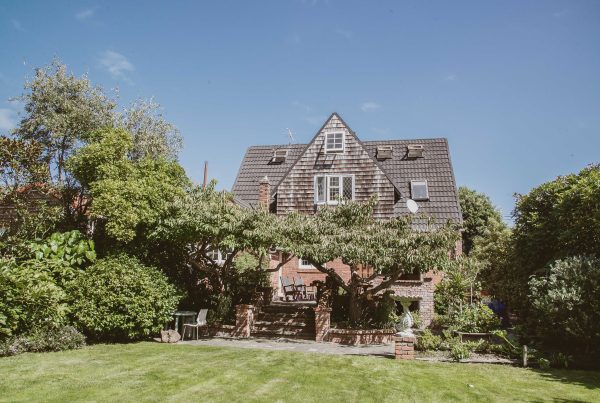Rounding the corner of Mahina Bay, just past the multi-coloured bus stop and right on the seafront, sits a little slice of paradise. Walking into Josephine Culhane’s 1940s two-storey concrete house, you immediately feel calm and collected. From the ocean views that stretch out across the bay to Wellington city, to the abundance of bush and wildlife sprawling up behind the house, there really is an amazing energy about this home.
Culhane bought the European-style house a little over a year ago, and has maintained its presence and beauty since then. The house was originally built by hand in the 1940s, primarily from concrete as well as frame and plaster. During the building stage, sand from the beach was used in the plaster mix, creating a literal beach house. As well as inspiring the design process, the beach and ocean across the road create an interesting and colourful seaside community, with dolphins, seals, seagulls and even orca calling the bay their home.
The house has had a variety of residents over the years and each has added their own unique touch. Nicola Olsen bought the house from the builder’s children in 1992 and carried out considerable renovations to the top and bottom storeys, although she says maintaining the bones of the original house was a priority. The downstairs area was previously used as a garage and workshop until Olsen transformed it into a self-contained apartment.
As you walk through the house you notice a harmony between contemporary and classic design. Newly renovated bathrooms feature antique taps, and a vintage painter’s trestle holds a flat-screen television. Both the house and apartment have a strong European influence, with crisp white concrete interior walls, imported Italian stone floors and wide open spaces. Olsen acquired much of the furniture and art that adorns the house, opting to leave it there for Culhane to enjoy rather than put it into storage.
An enormous white-framed mirror is an immediate eye-catcher as you enter the lounge area, which Culhane’s cats swear is haunted. The mirror – and a white wooden side table beside it – are both Louis XIV and bought by Olsen from a Thorndon Quay antique store that specialised in French and English furniture. With her love for French-style decor, it was fate that Olsen was to move to the south of France.
The house is nestled in the crook of the bay, perfectly sheltered from both the northerly and southerly winds: during the big storm of June 2013, it was completely protected. Culhane recalls the sea spilling over into her garage, with seaweed and sea creatures finding their way into her yard. Despite the destruction, the house itself remained completely intact. Mahina Bay is within walking distance of the Days Bay ferry, which is a fantastic way to travel across the harbour to the city. The bay is also close to Lower Hutt, where Culhane works as a kindergarten teacher and teacher trainer.
Culhane fell in love with the Mahina Bay home due to its stunning sea views and great location. Her friend Samara McDowell (see our IIML feature on page 28) wrote to her one evening while sitting in the house, “The bay, as beautiful as ever, washing in smoothly under a black sky, and the lights all twinkling”. Culhane has this quote displayed on her wall, a constant reminder of her little slice of heaven.

